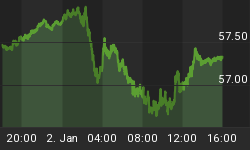Last week, I complimented investors for understanding what is driving this market. It is the perception that some central bank has back stopped asset prices. And on the heels of another announcement by policy makers to bail out and backstop the banks and governments in Europe, the markets rallied strongly. Like I said, investors know what to do once they understand what to do. But beyond Friday's euphoria (relief?), I am not so sure I can attach any long term significance to a plan that is long on hope and short on details. Nothing has changed including investors' perceptions as policy makers acted like they were suppose to. And the markets reacted like they were suppose to. Yet it is not clear to me why this latest proclamation is the "one" that will fix everything. The big question does Friday's action have any meaning for the markets beyond the short term.
From a sentiment perspective, the data remains consistent with a market top rather than the next launching pad to a new bull market or even a sustainable bull run. For several weeks, I have been of the opinion that whatever bounce develops would not carry too far because sentiment really wasn't too bearish at the bottom. Large rallies usually start with real extremes in investor sentiment and consensus among the sentiment data, which we did not see despite the SP500 dropping about 10% over 8 weeks from the April highs. Although the "dumb money" was bearish (i.e., bull signal), corporate insiders were neutral. Throw in the fact that investors have been primed to front run anything that sounds like quantitative easing or bail out, you can understand why investors weren't too concern. Don't worry some central banker has your back.
From this perspective, little has changed to alter the "call": this is a market top. The price action and sentiment picture remain consistent with this observation. Friday's "pop" in the market could just as easily be due to calendar effects rather than another proclamation to fix an unfixable problem. I don't think there is any great significance to Europe's latest plan to fix the world as we knew it!
The "Dumb Money" indicator (see figure 1) looks for extremes in the data from 4 different groups of investors who historically have been wrong on the market: 1) Investors Intelligence; 2) MarketVane; 3) American Association of Individual Investors; and 4) the put call ratio. This indicator is neutral.
Figure 1. "Dumb Money"/ weekly
Figure 2 is a weekly chart of the SP500 with the InsiderScore "entire market" value in the lower panel. From the InsiderScore weekly report: "Insider trading volume began a seasonal decline last week with the number of unique buyers and sellers falling more than -40% sequentially. Companies generally close trading windows for insiders 10-14 days prior to quarter's end and reopen them following their subsequent earnings announcement. Volume will continue to dissipate over the next few weeks and getting a macro read will be difficult because of the limited number of insiders who are free to trade."
Figure 2. InsiderScore "Entire Market" value/ weekly
Figure 3 is a weekly chart of the SP500. The indicator in the lower panel measures all the assets in the Rydex bullish oriented equity funds divided by the sum of assets in the bullish oriented equity funds plus the assets in the bearish oriented equity funds. When the indicator is green, the value is low and there is fear in the market; this is where market bottoms are forged. When the indicator is red, there is complacency in the market. There are too many bulls and this is when market advances stall. Currently, the value of the indicator is 61.77%. Values less than 50% are associated with market bottoms. Values greater than 58% are associated with market tops. It should be noted that the market topped out in 2011 with this indicator between 70% and 71%.
Figure 3. Rydex Total Bull v. Total Bear/ weekly
TheTechnicalTake offers a FREE e-newsletter: HERE
















